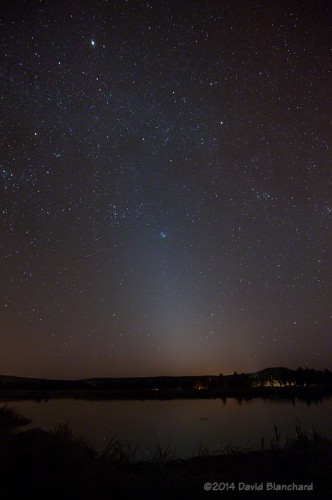With exceptionally clear and dark skies it was a good time to capture an image of the zodiacal light. Here is what Wikipedia has to say about this astronomical phenomenon.
Zodiacal light is a faint, roughly triangular, diffuse white glow seen in the night sky that appears to extend up from the vicinity of the Sun along the ecliptic or zodiac. It is best seen just after sunset and before sunrise in spring and autumn when the zodiac is at a steep angle to the horizon. Caused by sunlight scattered by space dust in the zodiacal cloud, it is so faint that either moonlight or light pollution renders it invisible.
With no moon and Flagstaff’s dark skies, it’s pretty easy to see the zodiacal light.

And speaking of dark skies, Flagstaff became the World’s First “International Dark Sky City” way back on October 24, 2001. From the Flagstaff Dark Skies site:
In 1958, Flagstaff pioneered the world’s first lighting ordinance designed to preserve the night for astronomy. Since 1958, Flagstaff astronomers have mostly relied on quiet, friendly diplomacy to protect the night sky…
Flagstaff’s dry, clear skies and dark, cloudless nights drew Percival Lowell to town in 1894. The townspeople deeded the eccentric, wealthy Bostoner a pine-clad knoll atop the mesa immediately west of town as an observatory site, and built him a wagon road to reach it. The area became known as Mars Hill because of Lowell’s famous passion for the red planet.
An exposure of 30s, ISO3200, f/4 was enough to bring out the details of the white glow as well as its reflection in the waters of the Kachina Wetlands. At the top of the image is the bright planet Jupiter.